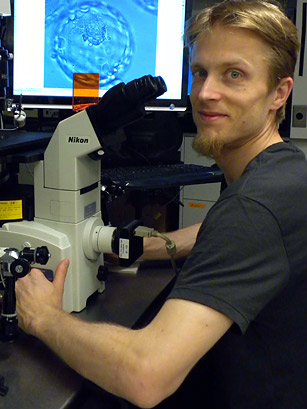
Dr. Dieter Egli, and his team at the New York Stem Cell Foundation, have come closer than anyone to cloning a human. In a study published this year, Egli's team used the same technique that created Dolly the sheep, the first cloned mammal, to fuse a human skin cell with an egg cell and prompt it to divide. But Egli, who has become one of the world's experts in the process — known as somatic cell nuclear transfer (SCNT) — wasn't looking to cook up a host of mini-mes. Rather, his goal was to coax the egg to divide long enough to generate embryonic stem cells — patient-specific cells that can give rise to any other cell in the body and may, one day, be used to treat a variety of diseases, from diabetes to heart conditions.
Egli's advance was a milestone. Previous attempts to use SCNT to make human embryonic stem cells have collapsed because the egg usually failed to continue dividing. Egli's trick was to combine the genetic material of the skin cell and the egg cell, rather than emptying the egg of its DNA first, as Dolly's cloners had, and replacing it with the DNA from the skin cell. Keeping the egg's DNA intact appeared to allow it to divide successfully — a breakthrough that shows it can be done. The problem is that the resulting stem cells have an extra set of chromosomes, making them unusable for treatment. So the next step is to figure out how to silence the egg's genes or to isolate and harness the exact genes from the egg that are critical to reverting an adult cell back to an embryonic state, avoiding the need to combine cells' genetic material.